|
|
|
Amphibians
are members of the class
Amphibia,
a group of
vertebrates
whose living forms include:
=> frogs
 => toads
=> toads
 => salamanders
=> salamanders
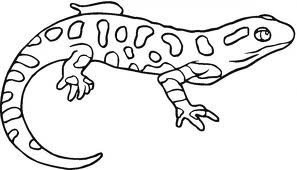 Their eggs are not surrounded by membranes.
Their eggs are not surrounded by membranes.
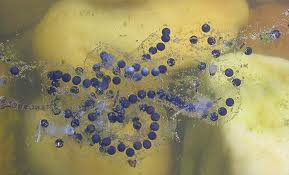 They are cold-blooded.
They have four limbs.
Most amphibians lay their eggs in water.
Adult amphibians also use their skin for respiration.
The three modern orders of amphibians are placed in the subclass:
They are cold-blooded.
They have four limbs.
Most amphibians lay their eggs in water.
Adult amphibians also use their skin for respiration.
The three modern orders of amphibians are placed in the subclass:
=> Lissamphibia and the Anura (frogs and toads)
=> Caudata (salamanders and newts)
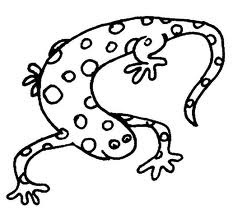 => Gymnophiona (caecilians,limbless amphibians that resemble snakes)
=> Gymnophiona (caecilians,limbless amphibians that resemble snakes)
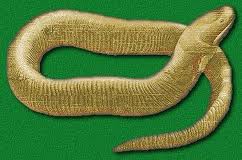
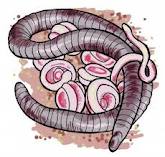
The total number of known amphibian species is approximately 6,500.
They are superficially similar to reptiles but reptiles along with mammals and birds are
amniotes having impervious
membranes that surround the egg.
Amphibian is derived from the Ancient Greek term which means: "both kinds of life" amphi meaning "of both kinds" bio meaning "life" The term was initially used generally for animals that could live on land or in water, including seals and otters. It became restricted to what we now call amphibians around 1600 and the taxon "Amphibia" was first used in scientific classification circa 1819
The amphibians are a class of vertebrate animals with four limbs. They are non-amniotes which means that their eggs are not surrounded by the several membranes. Amphibians typically reproduce in fresh water and are not found in the sea
The order Anura includes the frogs and toads.
Members of this order with smooth skins are commonly referred to as frogs while those with
warted skins are known as toads.
Many species are associated with water and damp habitats,some are specialised to live in trees and
in deserts.
They are found worldwide.


 The order Caudata includes the salamanders and one of its constituent families,
Salamandridae includes the true salamanders and the newts.
Salamanders and newts have pointed heads,long cylindrical bodies,four similar sized,short legs
and long tails.
They may be terrestrial or aquatic but many spend part of the year in each habitat.
The order Caudata includes the salamanders and one of its constituent families,
Salamandridae includes the true salamanders and the newts.
Salamanders and newts have pointed heads,long cylindrical bodies,four similar sized,short legs
and long tails.
They may be terrestrial or aquatic but many spend part of the year in each habitat.
 The order Gymnophiona includes the caecilians.
These are long,cylindrical,limbless animals that resemble snakes or worms.
Their skin has circular folds which enhances their similarity to the segments of earthworms.
Some are aquatic but most live underground in burrows they hollow out.
The order Gymnophiona includes the caecilians.
These are long,cylindrical,limbless animals that resemble snakes or worms.
Their skin has circular folds which enhances their similarity to the segments of earthworms.
Some are aquatic but most live underground in burrows they hollow out.
They are divided into three subclasses of which two are only known as extinct subclasses: Subclass:Lissamphibia Family:Albanerpetontidae — Jurassic to Miocene (extinct) Superorder:Salientia Genus Triadobatrachus — Triassic (extinct) — A stem Anuran Order Anura (frogs and toads):Jurassic to recent — 5,602 recent species in 48 families Order Caudata or Urodela (salamanders, newts):Jurassic to recent — 571 recent species in 10 families Order Gymnophiona (caecilians):Jurassic to recent — 190 recent species in 10 families The actual number of species partly also depends on the taxonomic classification.
Amphibian skin is permeable to water and contains many mucous glands which keep the skin from
drying out.
Gas exchange can take place through the skin and this allows adult amphibians to hibernate at the
bottom of ponds.
Bright colors usually indicate that the species produces an exceptionally toxic poison.
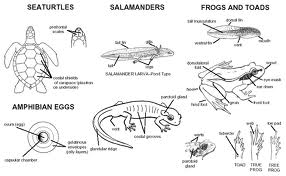
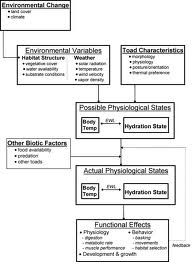
The skeletal system of amphibians is structurally homologous to other tetrapods,though with a
number of variations.
They possess a cranium,spine,rib cage,long bones such as the humerus and femur and short
bones such as the phalanges,metacarpals and metatarsals.
Most have four limbs except for caecilians.
Bones in most amphibians are hollow and lightweight.
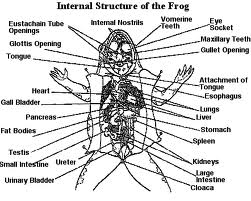
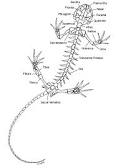
Amphibians have a juvenile stage and an adult stage and the circulatory systems of the two are
distinct.
In the juvenile (or tadpole) stage,gills are used to oxygenate blood and movement is similar to
that of fish.
The pineal body,known to regulate sleep patterns in humans is thought to produce the hormones
involved in hibernation and estivation in amphibians.
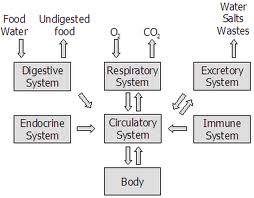
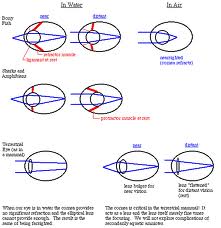
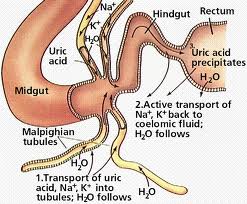 Amphibians swallow their prey whole with some chewing done in the oral cavities of some species,
so they possess voluminous stomachs.
Salamanders lack a valve separating the small intestine from the large intestine.
Amphibians have two kidneys located dorsally near the roof of the body cavity.
Their job is to filter the blood of waste and transport it to the urinary bladder where it passes
out of the cloacal vent.
Amphibians swallow their prey whole with some chewing done in the oral cavities of some species,
so they possess voluminous stomachs.
Salamanders lack a valve separating the small intestine from the large intestine.
Amphibians have two kidneys located dorsally near the roof of the body cavity.
Their job is to filter the blood of waste and transport it to the urinary bladder where it passes
out of the cloacal vent.
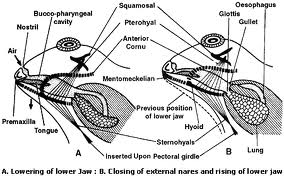 The lungs in amphibians are primitive compared to those of amniotes possessing few internal septa
and large alveoli and consequently having a comparatively slow diffusion rate for oxygen entering
the blood.
Many aquatic salamanders and all tadpoles have gills in their larval stage,with some
(such as the axolotl) retaining gills as aquatic adults.
The lungs in amphibians are primitive compared to those of amniotes possessing few internal septa
and large alveoli and consequently having a comparatively slow diffusion rate for oxygen entering
the blood.
Many aquatic salamanders and all tadpoles have gills in their larval stage,with some
(such as the axolotl) retaining gills as aquatic adults.
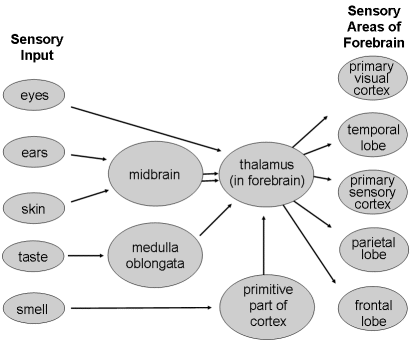 The eyes of amphibians have lids and associated glands and ducts.
They are an improvement on invertebrate eyes and were a first step in the development of more
advanced vertebrate eyes.
They allow colour vision and depth of focus.
The ears of salamanders and caecilians are less highly developed as they do not normally
communicate with each other by sound.
The eyes of amphibians have lids and associated glands and ducts.
They are an improvement on invertebrate eyes and were a first step in the development of more
advanced vertebrate eyes.
They allow colour vision and depth of focus.
The ears of salamanders and caecilians are less highly developed as they do not normally
communicate with each other by sound.
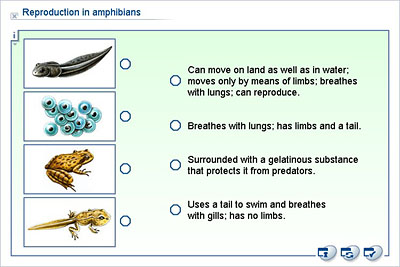 For the purpose of reproduction most amphibians require fresh water.
Newt larvae have large external gills that gradually disappear and the larvae of newts are quite
similar to the adult form from an early age.
For the purpose of reproduction most amphibians require fresh water.
Newt larvae have large external gills that gradually disappear and the larvae of newts are quite
similar to the adult form from an early age.
 Most amphibians go through metamorphosis,a process of significant morphological change after
birth.
In typical amphibian development,eggs are laid in water and larvae are adapted to an aquatic
lifestyle.
Most amphibians go through metamorphosis,a process of significant morphological change after
birth.
In typical amphibian development,eggs are laid in water and larvae are adapted to an aquatic
lifestyle.
With frogs and toads,the external gills of the newly hatched tadpole are covered with a gill sac
after a few days and lungs are quickly formed.
Front legs are formed under the gill sac and hind legs are visible a few days later.
Most amphibians go through metamorphosis,a process of significant morphological change after birth.
In typical amphibian development,eggs are laid in water and larvae are adapted to an aquatic
lifestyle.


In newts and salamanders,there is no true metamorphosis because the larvae already feed as
predators and continue doing so as adults.


 Most caecilians lay eggs in burrows formed in moist soil close to water.
The eggs are watched over by the female and,on hatching,the young make their way into the
adjoining pond or stream.
They have gill slits but no external gills.
Most caecilians lay eggs in burrows formed in moist soil close to water.
The eggs are watched over by the female and,on hatching,the young make their way into the
adjoining pond or stream.
They have gill slits but no external gills.
 Adult amphibians are predators,feeding mainly on live invertebrates.
The diet mostly consists of small items of prey that do not move too fast such as beetles,
caterpillars,earthworms and spiders.
Adult amphibians are predators,feeding mainly on live invertebrates.
The diet mostly consists of small items of prey that do not move too fast such as beetles,
caterpillars,earthworms and spiders.
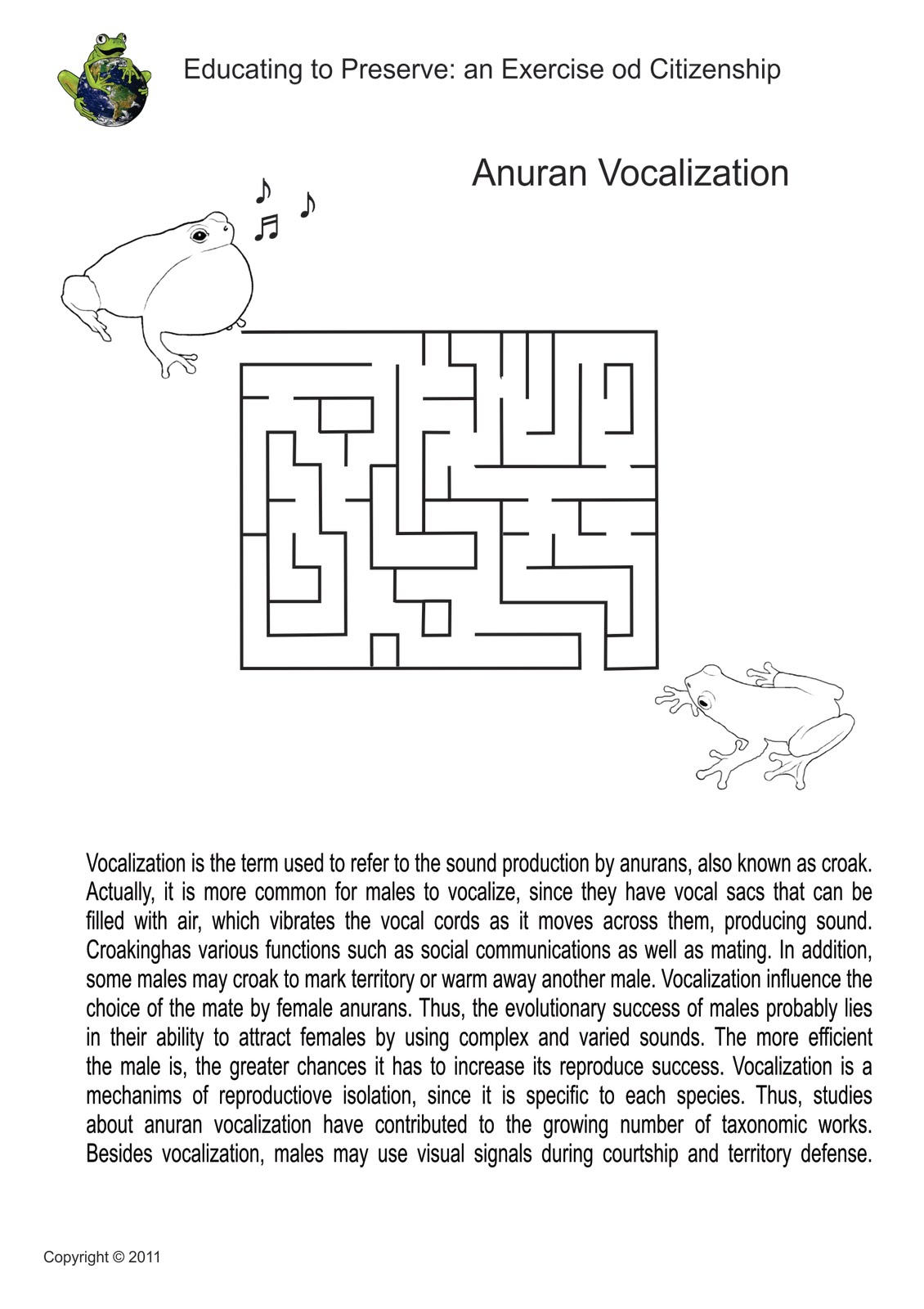 The noises made by newts,salamanders and caecilians are limited to occasional soft squeaks,grunts
or hisses.
Frogs and toads however use their voice in the breeding season to attract mates.
Each call is characteristic of the species,the presence of which in an area may be easier to
detect by its voice than by a fleeting glimpse of the animal itself.
Many species have single sacs but members of the family Ranidae have two, one on each side of the
mouth.
The noises made by newts,salamanders and caecilians are limited to occasional soft squeaks,grunts
or hisses.
Frogs and toads however use their voice in the breeding season to attract mates.
Each call is characteristic of the species,the presence of which in an area may be easier to
detect by its voice than by a fleeting glimpse of the animal itself.
Many species have single sacs but members of the family Ranidae have two, one on each side of the
mouth.
Amphibians have soft bodies and are relatively helpless. They are eaten by birds and mammals when on land and by fish when in the water. Many are nocturnal and hide during the day,thereby avoiding predators that hunt by sight,apart from owls which are also nocturnal. Other amphibians use camouflage to avoid being detected. They have various colorings such as mottled browns,greys and olives to make themselves inconspicuous so that they blend into the background.
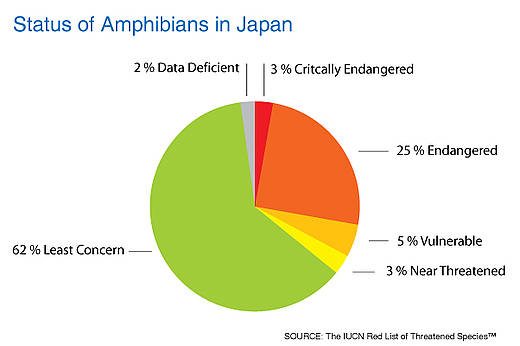 Dramatic declines in amphibian populations,including population crashes and mass localized
extinction,have been noted in the past two decades from locations all over the world, and
amphibian declines are thus perceived as one of the most critical threats to global
biodiversity.
Dramatic declines in amphibian populations,including population crashes and mass localized
extinction,have been noted in the past two decades from locations all over the world, and
amphibian declines are thus perceived as one of the most critical threats to global
biodiversity.